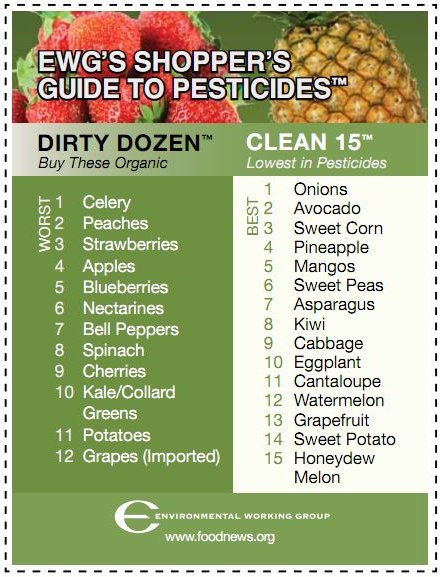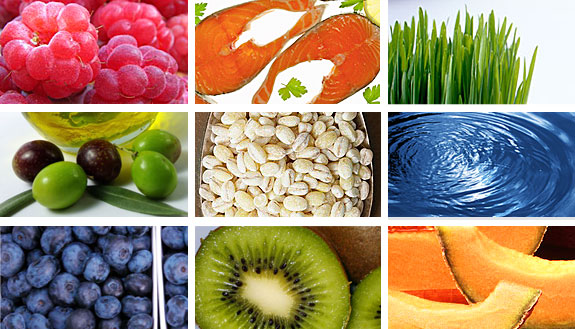- Food as your Medicine
- Dirty Dozen
- Warming & Cooling Foods
- Food Plans
"Let Food be your Medicine
and Medicine your Food".
Hypocrates
Modern nutrition is still evolving, it is not a mature discipline yet.
It also offers a fragmented view of food, focusing on seperate nutrients rather than whole foods and often fails to help balancing entire meals and days of food planning.
That's why it is so challenging to navigate the complexities of information we are bombarded with. Should I take 1000 or 4000 IU of Vitamin D? Is soy good or bad for me? New diets with fancy names and paramount health benefits are presented to us constantly, which one should I try? New research contradicts previous studies, who should I believe?
Rather than focusing on weight loss, calory intake, food groups (carbs, lipids, proteins) or vitamins, the Chinese diet focuses on how food tangibly affects us. The most simple and effective way to look at how foods affect us is their warming or cooling quality. Obviously, chili pepper, even frozen, is going to burn our mouth and make us sweat. Chili pepper is a warming food, together with mustard, curry, but also chicken, onion, garlic etc. So if you tend to feel cold, you will do better with warming foods in general, and especially during the cold season. Conversely, there are cooling foods and if you tend to always be hot and sweat profusely you will do better with more cooling foods such as watermelon but also apples, celery, peppermint etc. Here is a very effective and simple way to balance your diet: pick more warming or more cooling foods, depending on your tendency to feel hot or cold. A list of cooling, neutral and warming foods is provided under the "Warming & Cooling Foods" tab.
Chinese Medicine is a mature health system that evolved over the past two millenia (and even longer). It was not designed with the rigor and technology precision of modern Western medicine, but grew empirically from clinical observation and patiently recording what works and what does not work. Amongst such observations were the warming and cooling quality of various foods. A Chinese doctor will first try to help his patient get better using food / drinks. If that is not enough, she/he will resort to acupuncture, and herbs.
Eastern Nutrition provides a very refined way to optimize food and drink to a person's health condition, both short term (e.g. how to fight a common cold) and long term (e.g. how to deal with a chronic health imbalance). It is not a one size fits all. An Eastern nutritionist carefully analyzes the person's constitution and current health condition, and customizes their diet accordingly.
In addition to warming and cooling qualities, foods have many other properties that can be used in Eastern Nutrition.
In these pages, we will focus on what is the most frequently encountered in our latitudes and with our modern Western lifestyle.
Click on the tab "Dirty Dozen", Warming & Cooling Foods", "Food Plans" to read more on the subject of healthy nutrition.
If you've opted for organic food, but not 100%, here is a list to help you:
The "Dirty Dozen" are foods grown with the greatest amount of pesticides: definitely get these ones organic.
The "Clean Fifteen " are those with the least amount of pesticides: you are less likely to harm yourself by eating them non organic.
This list is compiled and regularly updated by the Environmental Working Group. It can be downloaded here.

Below is a list of the most common foods, classified according to their cooling, neutral or warming quality according to Eastern Nutrition
Use this list to help you make food choices that will work better for you. Ask a specialist of Chinese Medicine for more guidance and to customize your own food plan.
More will be published in these pages to help you optimize your food plans according to your situation.
|
COOLING
|
NEUTRAL
|
WARMING
|
Fruits |
||
| apple, banana, bilberries, blackcurrents, blueberries, citrus fruits (such as orange, lemon / lime, tangerine), cranberries, gooseberry, grapefruit, kiwi, mango, melons (esp. honeydew) & watermelon, mulberries, papaya, peach, pear, persimmon, strawberries | Apricot, fig, grapes, papaya, plums, pomegranate, raspberries |
Blackberries, cherries, coconut, dates, guava, lychee, raisins |
Vegetables |
||
| alfalfa sprouts and other sprouts, artichoke, avocado, bamboo shoots, cabbage - napa and bok choy, broccoli, carrots (also neutral depending on source), cauliflower, celery, cucumber, eggplant, bell pepper (green, red), lettuce (esp. romaine), pumpkin, radishes, spinach, sweet potatoes, yam, swiss chard, tomatoe, turnips, watercress, water chestnut, mushrooms, seawweds & kelp, spirunila, wild blu-green alguae, wheat and barley grass, zuchini / summer squash (yellow - long and small) | beet, carrot, kohlrabi, olive, shitake mushroom, potato, turnip | asparagus, cabbages (except for nap and bok choy), caper, chives, cilantro / coriander, garlic, kale, leek, mustard greens, parnsip, pepper, onion, rutabaga, scallion, winter squash (bigger than summer - orange) |
Grains and Legumes / Beans |
||
| Amaranth, barley, kamut, millet, wild rice, wheat, wheat bran, wheat germ bread |
Lentils, all beans except: - cooling beans = lima (green), mung (aka mash beans, the small green ones), kidney (brown-red), navy (green, ling in a shell), soy beans (aka ademame) - warming beans = black beans
Buckwheat, corn, rice (except wild rice is cooling, sweet & basmati rice are warming) |
Black beans
oats, oatmeal, quinoa, basmati rice, sweet rice, spelt |
Meat |
||
| Rabbit | Duck, goose, quail (game bird), pigeon, pork |
Beef, chicken, ham, lamb, turkey, venison |
Fish / Sea Food |
||
| Clams, crab, white flesh fish (also neutral depending on source), herring (also neutral), lobster, mackerel (also neutral), octopus, oysters (also neutral), sardine (also neutral), shrimps | abalone, carp, white flesh fish (also cooling depending on source), herring (also cooling), mackerel (also cooling), oysters (also cooling), sardine (also cooling), shark | Anchovy, eel, red flesh fish, lobster, mussels, salmon, trout |
Seeds & nuts |
||
| Pumkin seeds (also neutral), soy oil (also neutral) | Flaxseeds, hazelnuts, pistachio, pumpkin seeds (also neutral), black sesame seeds (also neutral), soy oil (also neutral) | almonds, chestnuts, peanuts, pine nuts, sunflower seeds, hemp seeds, flaxseeds, walnuts |
Dairy |
||
|
Soy products; soy cheeses, soy milk, miso soup, tempeh, soy yoghurt egg white |
whole egg cow milk (also considered cooling. In any case milk is also very Dampening and better avoided for most people in our latitudes. Fermented dairy products are less Dampening eg yogurt and cheese) |
almond milk, butter, cocoanut milk, goat cheese, goat / sheep milk, egg yolk |
Oils & Condiments |
||
| canola, safflower, sesame oil (sesame also neutral) | honey, pollen, royal gelly, olive oil (also warming), white sugar | amasake (sweet Japanese drink from fermented rice), molasses, oils: hemp seed, peanut, sunflower seed, olive (also neutral), walnut; brown sugarm maple syrup, rice syrup, vinegar |
Herbs & Spices |
||
| cilantro / coriander (also considered warming depending on source), red clover, dandelion greens & root, lemon balm, marjoram, nettle, peppermint, salt, tarragon | locorice, saffron | anise, basil, bay, carob, cayenne, cinnamon, chili, chives, clove, corriander / cilantro, cumin, curry, dill, fennel, fenugreek seeds, garlic, ginger, leek, hawthorn, horseradish, juniper, nutmeg, onion, oregano, paprika, parsley, pepper, rosemary, sage, savory, spearmint, thyme. turmeric |
Beverages |
||
|
water teas: black, green and white; chamomille, chrysanthemum, red clover, dandelion, elder flower, lemon balm, lime flower, nettle leaves, peppermint, raspberry leaf fruit juices beer |
liquorice tea (also warming), rosehip |
alcohol chicory, cocoa, coffee, Teas: jasmine (without black/green/white tea), fennel, liquorice tea (also neutral) |
Note that sometimes sources differ about the cooling / neutral / warming property of a food (Eastern Nutrition is not a hard science). It does not mean you should totally eliminate it in doubt, but make sure you get plenty of those foods from the category that is best for you.
While green leafy and other vegetables are cooling, you need to keep plenty of them in your diet. Do not eat them raw because raw adds cooling to your body (and Dampening, something we'll introduce in a later version of these pages). It is important to eat vegetables cooked: lightly steamed or broiled. We do not live in Crete and do not need to cool our body like they do under Mediterranean climates. Here in Canada raw is OK only in the hot summer days and should be avoided the rest of the time. Similarly do not eat or drink things that are at cold temperature (frozen berries in your shake, almond milk right out of the fridge).
A lunch made of a big salad (e.g. lettuce, tomatoes, raw carrots, celery, brocoli) is much too difficult to digest for most people. Add a raw apple and if this is how you normally eat, you are likely experiencing bloating, having loose stools, an uneasy digestion, often feel sluggish, or have a hard time loosing weight: your digestive fire is low. In our latitudes, particularly in the colder seasons, eating raw is really something to avoid according to Eastern Nutrition. I see the consequences of it every day in my clinic (IBS, bloating etc). You have no idea how often I see this, and how much better people feel when they introduce food at warm temperature for breakfast (rather than shakes with frozen berries and fridge temperature yogurt), as well as cooked vegetables taken warm for lunch.
Also important: get a full protein for breakfast and get a full protein for lunch.
Personally I have a full meal for breakfast (a habit contracted during ski raids and strenuous days of hiking / mountainering, and I have a lot more energy that way) using left overs from dinner. I also have a very limited intake of raw foods: berries, an apple or a pear every once in a while, or cooked fruits. A real meal for breakfast is not agreable to many, so in the food plan of the next tab I have included plenty of replacements for protein shakes as porridge type of dishes with a variety of cereals. Make sure you get nuts or an egg for breakfast, or a quinoa porridge for your complete protein. Make sure your breakfast is warm.
I cook in the style of the food plan (or almost :-), and cook plenty at a time. Then I warm up left overs for the next dinner or make a lunch box for the next lunch. I also freeze plenty for those busy times when shopping and cooking is not an option.
"Eat Breakfast like
a King,
Lunch like a Prince,
and Dine like a Pauper"
Traditional Chinese saying
In this tab we will progressively introduce examples of food plans. Based on Cooling/Warming and other properties of food according to Chinese nutrition, and also looking at methods of cooking and time of the day for different foods, it is possible to come up with menus that are quite easy to implement and very adjusted to specific needs.
Here is an example in the attached file. This plan has been carefully designed to more specifically help people who tend to feel cold, lack digestive fire (resulting in sub-optimal digestion of food, as well as sub-optimal digestion of thoughts with worry or repetitive thoughts at times), who may grow cysts or lumps, and who get bouts of recurring symptoms with stress and frustration (eg headache, nausea, tinnitus, neck tension). In middle aged women this can be accompanied by night sweats, hot flashes (in men a similar imbalance can occur but is less obviously visible).
This plan is actually quite balanced and will work for most people.
If there is a lot of Heat in your body (red skin patches or rashes, entirely red face, profuse sweating, fever, rapid pulse etc), you will need to add more cooling foods using the information from the "Warming & Cooling Foods" tab.
If your digestion is really difficult, or if you are recovering from an illness or surgery, then go with more chicken broth (prepared with the bones, adding a tsp of apple cider vineger to get the calcium from the bones into the broth), kungee, porridge, soups, simple stews and remove the lamb.
You can open the complete document by clicking here

